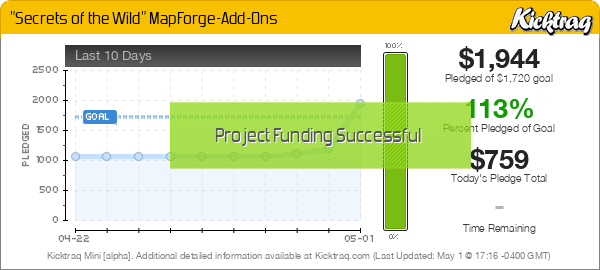Software to batch-generate and customize geomorphic battlemap tiles for tabletop RPGs
TileForge is a new application for creating geomorphic mapping tiles and stand-alone assets. These tiles and assets can later be used in your favorite image editor, map-making app, or even in a virtual tabletop app (e.g. Roll20, Foundry, Fantasy Grounds, etc.), to quickly assemble custom map layouts from the modular assets.
Creating geomorphic mapping tiles can be a tedious and labor-intensive process, normally done in graphics apps such as Photoshop or Gimp. TileForge automates that creation process. Simply choose a few textures (you can drag-and-drop texture images right onto the app), and TileForge will apply the necessary shape masks, drop shadows, bevels and other effects, and create an entire set of geomorphic map tiles using those textures.
It is quite fun to try out different textures and end up with wildly different tilesets, and all in very little time and with very little effort.
Even if you are a Photoshop pro, you can’t beat the time-savings you would achieve with TileForge in creating complete tilesets. Create entire tilesets in minutes, which would normally take days or even weeks to make “by hand”.
Need a layout that isn’t pre-configured in the app? No problem! Creating custom tile layouts is a snap.
Then tweak the appearance of your tiles quite easily with the built-in filter effects.
TileForge isn’t limited to creating just modular hallways or roads. You can also create rooms or buildings, including multi-tile ones. Even create them without a background, so that you can place them anywhere on your maps.
Depending on the textures you use, you can make tilesets for a variety of genres: Fantasy, Modern Day, Sci-Fi, etc. Your choice of textures and filter effects determines the genre.
“Why would I want to use tiles?“
TileForge is very easy to use, and has an attractive and modern interface. TileForge is an app that you download and install on your PC (i.e. it’s not a web app), and it is usable without internet connectivity. You can choose the resolution of the generated tiles (e.g. 50, 140, 200 or 300 pixels per grid square, depending on whether you want the tiles to be for use in a VTT, or if you’d like to print them out).
Will there be Add-Ons? Unlike MapForge, I’m not expecting to offer content Add-Ons for TileForge. In fact, I would like to eventually make it so that any MapForge Add-Ons you already own can be used in TileForge, so that you can decorate your tileset variants and have access to any textures that those Add-Ons may contain.
Who it’s for: TileForge is not intended just for the artistically or technically gifted. It will allow anyone, regardless of their art skills or technical skills (or lack thereof), to create gorgeous professional-looking tilesets. With TileForge, you’ll can produce Photoshop-like effects such as bevels, drop-shadows, strokes, glows, blurs, and color adjustments, without the steep learning curve that producing such effects normally requires. The expected userbase is Game Masters of tabletop RPGs, entrepreneurs looking to create and sell their own tilesets, and hobbyists.
Technical specs: The system requirements for TileForge are fairly modest. The software should run on most Windows PCs and Macs made in the last decade (including M1 Macs running the latest macOS).
Note to MapForge users: In addition to saving tilesets as JPGs or PNGs, TileForge will probably also eventually have an option to save tilesets to MapForge’s Add-On format (.cxt). This will allow you to reap the benefits of the Add-On format. That feature will probably be added in Q3 or Q4 of 2023.
Entrepreneurs take note: If the textures that you utilize in a tileset allow commercial use, you could sell your TileForge-generated tilesets on sites like DriveThruRPG, the Roll20 marketplace, Etsy, Fiverr, and/or other online stores that cater to RPG fans. Or run your own crowdfunding campaign to deliver your tileset/s printed on card stock designed for use with dry erase or wet erase markers (e.g. just look how much this Kickstarter campaign made! And that was for basic untextured tiles!)
MapForge vs TileForge
TileForge is a good companion app to my map-making software, MapForge, but that software is not required.
Why two apps? Perhaps the best way to explain the differences between the programs is this: MapForge is primarily for utilizing existing assets, whereas TileForge is for creating assets. The two apps should complement each other quite well, but one app does not require the other.
I’m hoping that an easy-to-use app for asset creation will be a welcome and empowering tool for those who don’t have the time or patience to deal with image editors like Photoshop or Gimp. There might be plenty of virtual tabletop users who would rather make their own assets and not have to purchase all their content, and until now, haven’t had the right tool (or skillset) to do so.
What makes TileForge special?
Easy to use
Versatile. You can use the program to make high-resolution tiles for printing, or lower- resolution tiles for use in your favorite virtual tabletop software.
Gorgeous and user-friendly interface. The user interface for TileForge is thematically generic, but attractive and modern. And it should appeal to you whether you’re the type who prefers to click on buttons and choose menu commands to get things done, or of you’re the power-user type who likes to use hotkeys to get things done even quicker.
Cross-platform. Whether you’re a Windows user or a Mac user, TileForge has you covered. And if you have a TileForge license and someday decide to switch platforms, you can just request a new license code for the new operating system, free of charge.
Offers a free level of use
Empowering, but with a shallow learning curve
High-quality output

